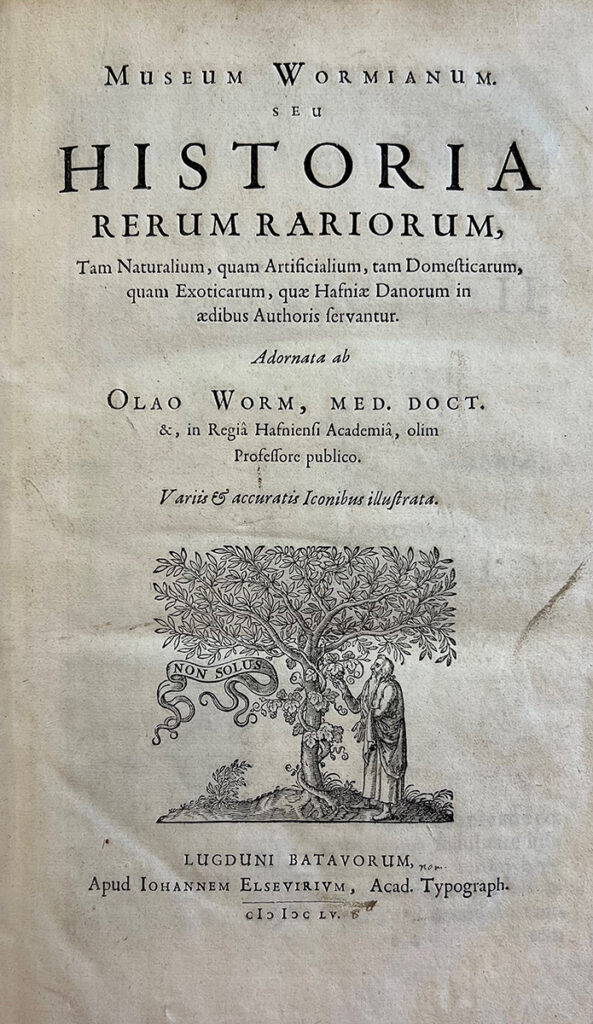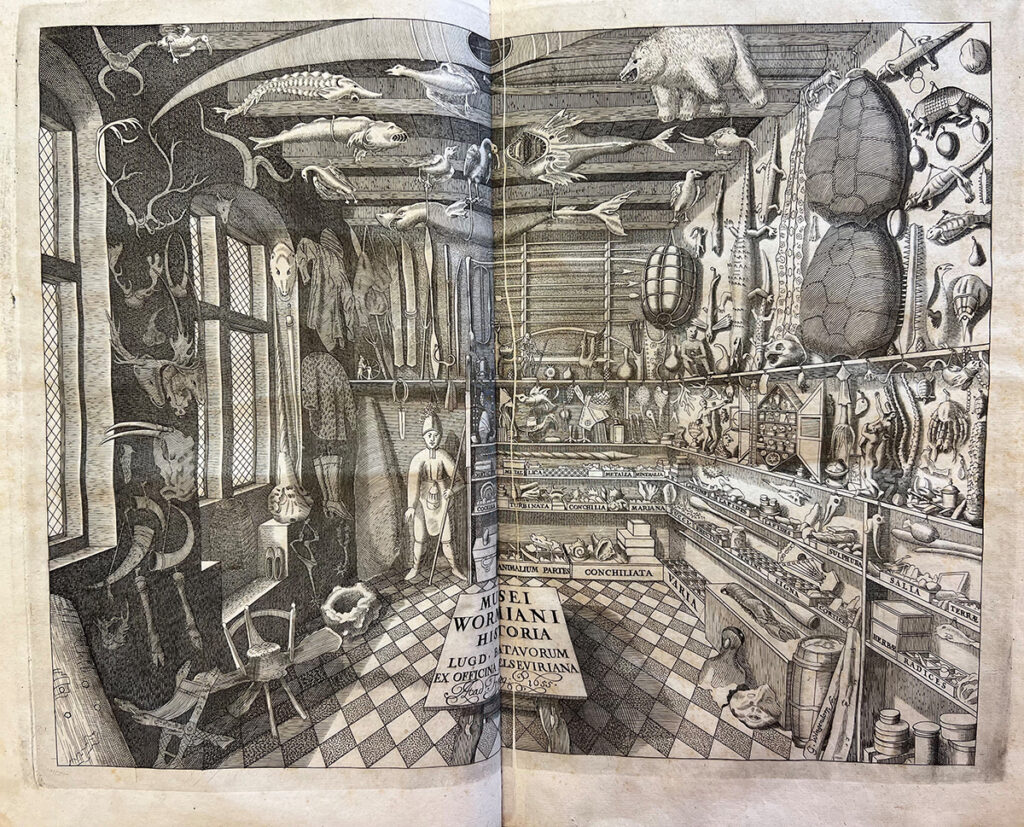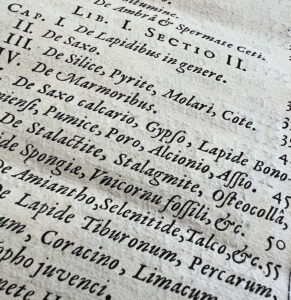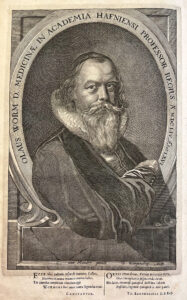Ole Worm’s Museum Wormianum (1655)
By Danielle Greenberg

Imagine, if you will, that it is the seventeenth century. Public museums as we know them do not exist yet, but some individuals own private collections in the same vein. These are often called curiosity cabinets; they are specific rooms that house collections of all sorts of specimens, ranging from the natural (such as minerals) to the artificial (man-made artefacts). They are a wonderful resource for a budding natural philosopher, allowing the ‘rare and exotic’ to be readily available for close observation and experimentation, but just how would you be able to access them? If you can’t physically see the collection, don’t fear: Ole Worm (1588-1654) has provided an easy alternative. Simply grab his book, the Museum Wormianum, and enjoy it from the comfort of your own home!
Perhaps the best way to describe the Museum is as a catalogue. It functions like a modern online archive or an exhibition book you’d get from a museum gift shop: it lays out the contents of the collection, divided into categories set up by Worm. The book itself is also divided into several sections, each containing one general category of specimen, like the exhibits of a museum. In fact, reading it can feel similar to wandering through one. So how does this mimicry of early curiosity cabinets work to get information across to Worm’s readers?
We can consider the book itself as a form of museum, its exhibits contained in the figurative building of its binding. So, let’s take the book off its shelf, taking great care with the long chain which keeps it attached, open the big leather cover and step inside. Instead of an entrance hall, you are greeted by an index, which tells you what kinds of specimens you can find in the collection and in what section to look for them, like a map.

Before we venture further into the collection, let’s pause to look at the double-page illustration at the beginning of the book, which showcases Worm’s physical collection. Take in the wide variety of specimens displayed, as neatly organized on the shelves lining the wall as they are in the book: an assortment of shells and fossils, bones and taxidermy. This is what Worm’s real-life curiosity cabinet would have looked like.
The book is written entirely in Latin. This was common for its time, and it was a way to ensure its widespread accessibility for an international audience. Alongside its consistent references to classical authors, this illustrates that its intended readers would have been educated. What is especially interesting about Worm’s use of ancient texts, though, is that he sometimes questions what they say. He uses both theories posited by other writers, such as the Greek physician Galen, and his own observations to form his opinions.

We can see this clearly in the description for one specific fossil, which is labelled in the index as a Unicornu fossili, an alleged unicorn horn. However, Worm does not describe it as such in its corresponding entry. He begins by listing other possibilities for what it might be: ivory or a petrified tooth (‘Dens Elephanti petrefactus’), and so on. Like other early scientists and collectors of his time, who started to shift from relying on classical texts as authoritative sources and focused more on personal experience, Worm is careful to consider all aspects of the specimen, particularly his own observations, to form his conclusions. By doing so, he also encourages his readers to do the same. He describes the physical characteristics of the fossil before theorizing about its origin; he notes its hard exterior (‘cortice exterior duro’) and softer interior (‘medulla molli, alba, levi, friabili, absque poris’), its colour (‘flavescente, nigro aut subcinereo’), and the thickness of the material from which it is made. This vivid description would have been as close to physically seeing and handling the object as many readers could get; by providing them with the facts of its appearance and multiple potential explanations, but nothing definitive, Worm motivates them to observe and search for answers themselves.
 Like any modern museum, Worm’s book aims to inspire its readers to pursue natural philosophy—what we would now call science—and examine the world around them. He provides us with the necessary descriptions, and occasionally illustrations, which we need to make sense of each specimen, but it is ultimately up to us to form our own conclusions. Perhaps a seventeenth-century reader would have believed the ‘unicorn fossil’ really came from a unicorn, and perhaps, after reading Worm’s entry, they might have decided it was something else altogether. That is the power of books such as the Museum Wormianum: not only do they make scientific knowledge and collections more accessible, but they want you to engage with them. So if Worm has inspired you, next time you go to a museum, take a moment to really observe the objects on display. You might be surprised by what you find.
Like any modern museum, Worm’s book aims to inspire its readers to pursue natural philosophy—what we would now call science—and examine the world around them. He provides us with the necessary descriptions, and occasionally illustrations, which we need to make sense of each specimen, but it is ultimately up to us to form our own conclusions. Perhaps a seventeenth-century reader would have believed the ‘unicorn fossil’ really came from a unicorn, and perhaps, after reading Worm’s entry, they might have decided it was something else altogether. That is the power of books such as the Museum Wormianum: not only do they make scientific knowledge and collections more accessible, but they want you to engage with them. So if Worm has inspired you, next time you go to a museum, take a moment to really observe the objects on display. You might be surprised by what you find.